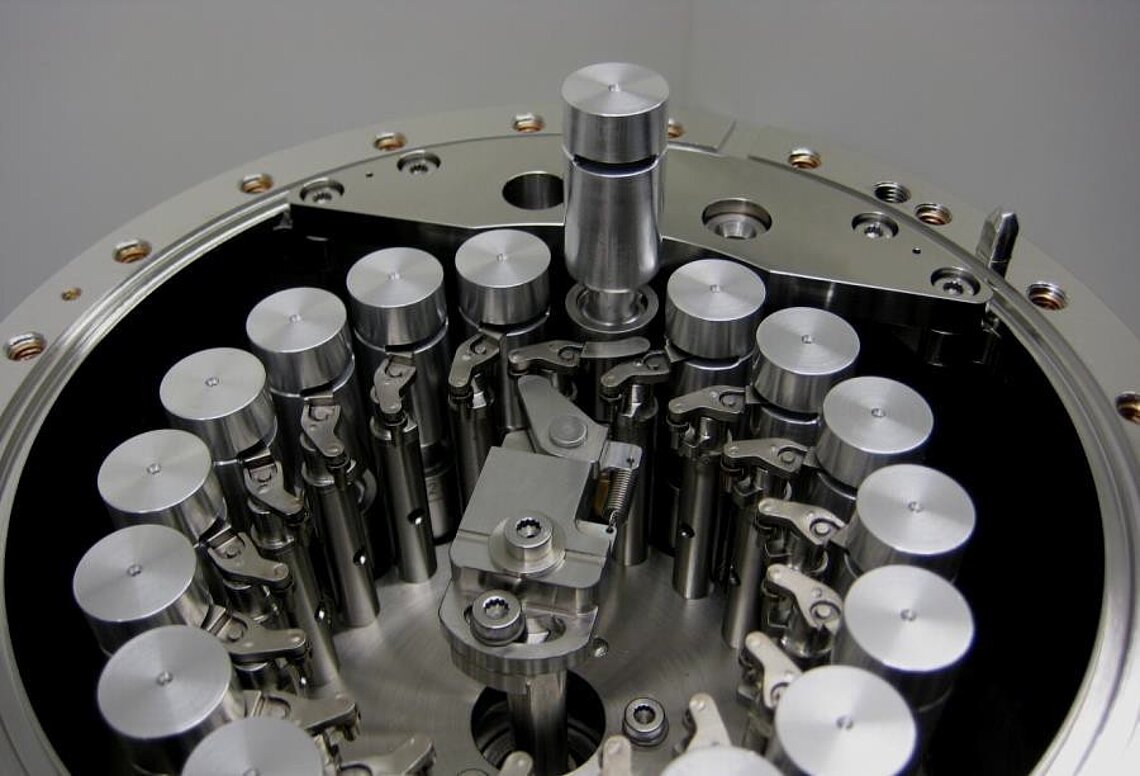Proud to be part: Advanced Ceramics in Research
Image: The sample chamber with sample holders (source: Airbus)
As a leading international manufacturer of advanced ceramics, the CeramTec Group has once again successfully produced ceramic sample containers for a space experiment facility on the ISS.
In the course of this and previous joint product development, CeramTec, together with Airbus Defence & Space and other partners* in a project consortium, developed sample containers for experiments as complex components and manufactured them at the Plochingen site.
The pot sample holders and cage sample holders are made of silicon nitride and were installed in the International Space Station (ISS) for the first time in already 2017. They are used in the so-called Electro Magnetic Levitator (EML), a multi-purpose research facility for natural science experiments on board the ISS. The EML and its predecessors can already look back on more than four decades of successful research work by international teams from Germany, the USA, Italy, Russia and other nations. In the EML, the sample containers are inserted into a coil in which metal alloy samples are fixed all around in a contact-free manner by electromagnetic fields while suspended in zero gravity. For analysis, the samples are melted, cooled in the liquid state and then solidified again. These precision measurements of certain thermophysical properties of metals, alloys and semiconductors, which are not possible on Earth, make it possible to analyze the early phases of the formation of material structures and to expand our understanding of transition processes, atomic structures and material properties.
The "mundane" objective here: to improve production and casting processes on Earth thanks to the material properties measured in space, in order to achieve an increase in quality while reducing the cost of high-tech castings (e.g. engine blocks). This will allow manufacturing methods to be refined and materials and products to be improved and redeveloped. This basic research is being realized in a collaboration between Airbus Defence & Space, the European Space Agency ESA (Contract 21788/08/NL/BJ [EML (Electro-Magnetic Levitator) Phase B2/C/D Development; Contract Change Notice 45 [EML Experiment Infrastructure (EXI) for Batch 3]) and the Space Agency of the German Aerospace Center (DLR) (Contract 50WP0505, 50WP0606, 50WP0808), among others.
Silicon nitride has ideal properties
The ceramic material silicon nitride (Si3N4) is particularly suitable for this purpose due to its non-existent electrical conductivity, which prevents external influences on the measurements, and the required high heat resistance – after all, the measurement cycles take place in temperature ranges between 500 and 2100°C. This, as well as the absolute reliability and consistently high product quality, have once again convinced the project consortium to use CeramTec advanced ceramics for what is probably "the most demanding application in the universe".
The sample containers of this latest generation started their journey into space with the SpaceX-22 in June 2021 and will significantly support further research activities there.
*The view expressed herein can in no way be taken to reflect the official opinion of the European Space Agency nor of the German Space Agency
More information about about Silicon Nitride (Si3N4)
